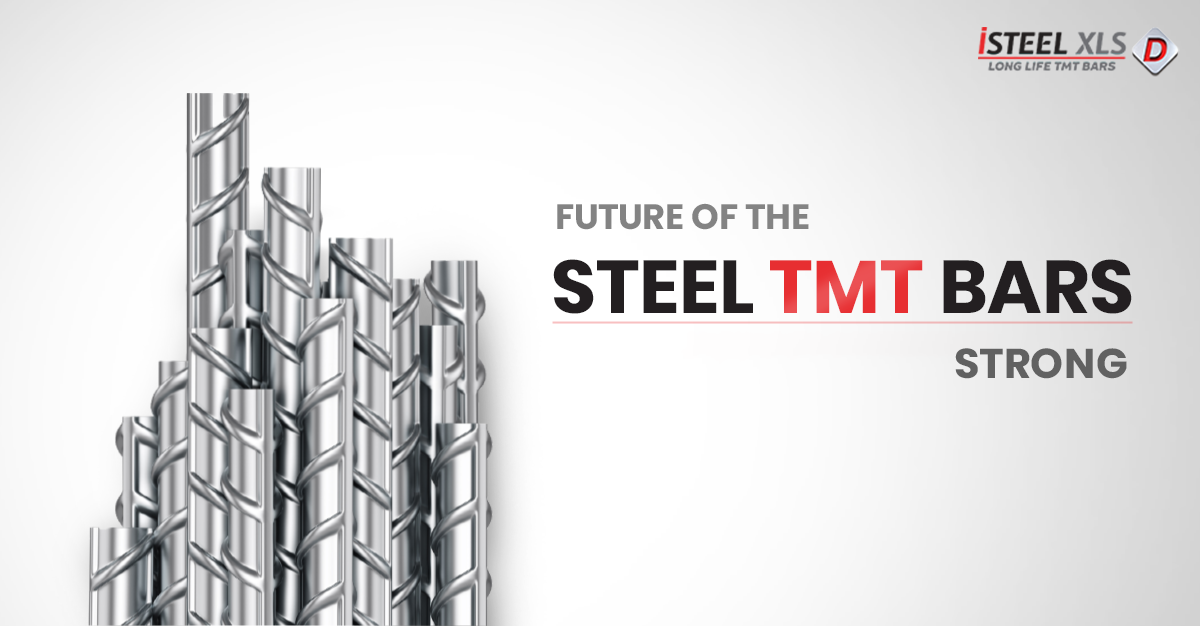Comparison of TMT Steel with Other Construction Materials

- By : admin
- 0 Comments
Steel Stronger Than Ever: Why TMT Steel is the Top Choice for Modern Construction Projects
In the world of construction, choosing the right building material is crucial for ensuring the strength, durability, and overall quality of a structure. One material that has gained immense popularity and proven its importance is TMT steel. With its exceptional properties, TMT steel for construction has emerged as a superior option compared to other conventional construction materials. In this article, we will explore a comprehensive comparison of TMT steel with other popular construction materials, highlighting its advantages and showcasing why it stands out as the go-to choice for modern construction projects.
TMT Steel: Unmatched Strength and Durability
TMT steel is manufactured through a unique process that involves controlled cooling and heat treatment. This process imparts superior strength and durability to the steel, making it ideal for withstanding heavy loads and adverse environmental conditions. Compared to traditional mild steel, TMT steel boasts higher tensile strength and enhanced ductility, reducing the risk of structural failure during earthquakes, hurricanes, or other extreme events.
Concrete: A Reliable but Brittle Option
Concrete is a widely used construction material known for its versatility and affordability. However, it falls short when compared to TMT steel in terms of strength and flexibility. Concrete structures tend to be more vulnerable to cracks and damage under excessive loads or seismic activities. By incorporating TMT steel reinforcement within concrete structures, engineers can significantly enhance their load-bearing capacity, crack resistance, and overall durability.
Wood: Traditional Charm with Limitations
Wood has been a favored material in construction for centuries, known for its natural beauty and thermal properties. However, it faces limitations in terms of strength and susceptibility to rot, pests, and fire hazards. TMT steel, on the other hand, offers superior strength, fire resistance, and longevity, making it a more reliable choice for structural elements such as columns, beams, and foundations.
Brick and Stone: Timeless but Heavy
Brick and stone have long been admired for their timeless appeal and durability. However, they pose challenges in terms of weight, labour-intensive installation, and limited design flexibility. TMT steel, with its high strength-to-weight ratio, provides the advantage of lighter structural components, allowing for more efficient construction and greater design freedom. Moreover, TMT steel reinforcement can enhance the load-bearing capacity of brick and stone structures, ensuring longevity and structural integrity.
Comparative Analysis: TMT Steel vs. Other Construction Materials
Tensile Strength and Ductility:
TMT steel exhibits remarkable tensile strength, making it capable of bearing heavy loads and resisting external forces. Compared to traditional mild steel, TMT steel has a higher yield strength, ensuring structural stability and reducing the risk of failure. Additionally, its enhanced ductility allows it to withstand deformation without fracturing, providing an added layer of safety during seismic events.
In contrast, concrete structures, while widely used, have inherent limitations in terms of tensile strength. Concrete is inherently brittle and prone to cracking under excessive loads. However, by incorporating TMT steel reinforcement in the form of rebars, the composite structure of reinforced concrete combines the compressive strength of concrete with the tensile strength of TMT steel, resulting in a robust and resilient building system.
Corrosion Resistance:
One of the significant advantages of TMT steel is its resistance to corrosion. The manufacturing process of TMT steel involves the application of a protective layer, which shields it from rust and other forms of corrosion. This protective layer prevents the penetration of moisture, ensuring the longevity and durability of the structure even in challenging environments such as coastal areas or regions with high humidity.
On the other hand, traditional materials like mild steel and iron are highly susceptible to corrosion, which compromises the structural integrity over time. Corrosion weakens the material, leading to degradation and the need for frequent maintenance or replacement. TMT steel’s corrosion resistance reduces maintenance costs and enhances the longevity of the structure, making it a cost-effective choice in the long run.
Fire Resistance:
TMT steel possesses excellent fire-resistant properties, making it an optimal choice for construction projects with stringent fire safety requirements. Unlike other materials such as wood or certain composite materials, TMT steel does not burn or contribute to the spread of fire. It retains its strength and structural integrity even under high temperatures, providing valuable time for evacuation and firefighting efforts. This attribute is especially crucial in commercial buildings, high-rise structures, and infrastructure projects where fire safety is of utmost importance.
TMT steel for construction outshines its competitors with its unparalleled strength, durability, and versatility. From providing robust structural support to enhancing seismic resistance and ensuring fire safety, TMT steel has become the go-to option for architects, engineers, and construction professionals. Its superior properties and performance make it the material of choice for modern construction projects seeking long-lasting, resilient structures. By harnessing the power of TMT steel, the construction industry can elevate the standards of safety, durability, and innovation to create a sustainable built environment for generations to come.
